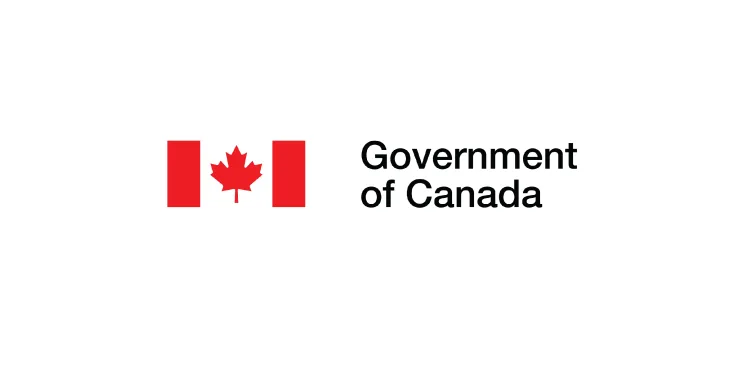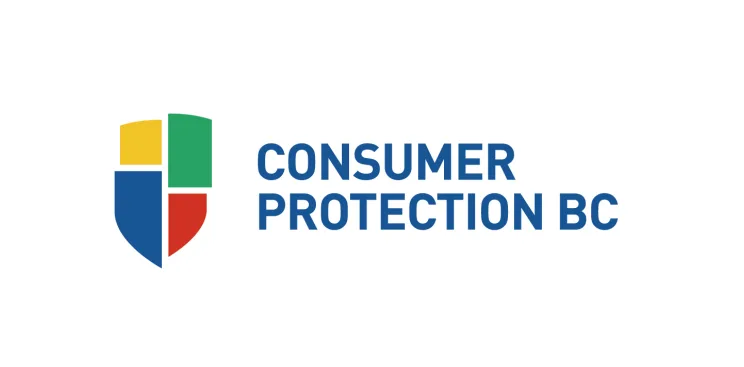
Making a consumer proposal is more or less the same as going bankrupt.
You want to repay your debts, but each month you’re scrambling to make even the minimum payments. The dollar figures on your bills keep growing. It’s getting to the point where you’re thinking of declaring bankruptcy. Before you decide on that drastic course of action, learn how you can reduce or eliminate your debts by making a consumer proposal.
What you should know
"I was maxed out on several lines of credit. Then I started missing payments. I decided to see a trustee about filing for bankruptcy. She reviewed my finances and explained the option of a consumer proposal. We came up with a reasonable offer for my creditors. Now my monthly payments are much more affordable, and I get to keep all my property.”
– Dimitri, Victoria, BC

A consumer proposal is an offer you make to your creditors to settle your debts. The offer can be to pay them a percentage of what you owe, to extend the time to pay them, or both. If your creditors accept the proposal, you pay them under the terms of the consumer proposal, typically for a period of three to five years. If you meet the conditions in the proposal, you will be legally released from your debts — except for a few types of debt, such as support payments.
A consumer proposal is a formal, legally binding process overseen by a licensed insolvency trustee. (This is a professional licensed by the federal government to advise people with debt problems.) It’s less severe than bankruptcy, since you get to keep your assets and it won’t hurt your credit score for as long as going bankrupt does.
When you make a consumer proposal, you stop making payments directly to your creditors. If your proposal is accepted, you start making payments to the insolvency trustee. The trustee distributes the money to your creditors under the terms in the proposal. All of the money must be paid out under the consumer proposal within five years.
Only a licensed insolvency trustee can file a consumer proposal
Watch out for debt-relief companies offering to file a consumer proposal for you. Under the law, only a licensed insolvency trustee can file a consumer proposal. Often, these debt-relief companies charge excessive fees up front before referring you to a licensed trustee. Find a licensed trustee near you, and book a free consultation.
Under the law in Canada, you must be “insolvent or bankrupt” to make a consumer proposal. To qualify as “insolvent," you must live in or own property in Canada and owe at least $1,000 to creditors. Plus, you must meet one of the following criteria:
You can’t pay your debts as they come due.
You’ve stopped paying your debts.
The value of your property wouldn’t be sufficient to pay all your debts.
You can’t make a consumer proposal if you owe more than $250,000 (not including a mortgage on your home).
If you’re going through bankruptcy proceedings and you file a consumer proposal, your bankruptcy is cancelled. Any property you surrendered in your bankruptcy is returned to you.
Some debts can’t be included in a consumer proposal. These include:
secured debts, such as a home mortgage or a loan that is secured by collateral (such as a car loan)
debts arising from spousal or child support payments
court fines or penalties
debts resulting from fraudulent activity
student loans if it’s been less than seven years since you’ve been out of school (see more on the "seven year rule")
Some common types of debt that can be included in a consumer proposal are:
unpaid credit card debt
lines of credit
personal loans
tax arrears
debts owed to collection agencies
student loans, if it’s been more than seven years since you’ve been out of school
You can’t pick and choose the debts to be included in a consumer proposal. All debts that are eligible to be included must be included.
Under the law in Canada, only a licensed insolvency trustee can file a consumer proposal.
Consumer proposal proceedings begin when you meet with an insolvency trustee to discuss your financial situation. The trustee reviews your income, expenses, assets and liabilities to confirm that you’re insolvent. This information is set out in the consumer proposal, along with your offer of partial payment. The trustee prepares the proposal in the required form and files it with the government office that oversees insolvencies.
After the consumer proposal is filed, the trustee sends a copy to each of your creditors. From this point on, the trustee will deal directly with the creditors on your behalf.
The first meeting is typically free
Usually, the first meeting with an insolvency trustee is free. If you work with a trustee to make a consumer proposal, you’ll need to pay them. The fees trustees can charge are regulated by the federal government. To find a licensed insolvency trustee in your area, search this database.
Under the law in Canada, creditors have 45 days to respond to a consumer proposal. Any creditor who doesn’t indicate their choice in that period is said to have assented to the proposal (that is, agreed to it).
If creditors holding 25% or more of your debt reject the proposal, all creditors must attend a meeting. At the meeting, the creditors vote on your consumer proposal. If those holding a majority of your debt vote in favour, the proposal is accepted.
If your creditors reject your proposal at the meeting of creditors, you can revise your offer or look into other options for getting out of debt, such as declaring bankruptcy. (That said, creditors usually prefer to negotiate a repayment plan through a consumer proposal, rather than see you declare bankruptcy. That’s because creditors typically receive more from a consumer proposal than they would in a bankruptcy.)
Under the law in Canada, after a consumer proposal is accepted, creditors have 15 days to ask a court to review it. If a creditor asks for a review, the court will determine if the proposal is reasonable and fair to the debtor and creditors. Based on its review, the court has the power to approve or reject the proposal.
If no creditor asks for a review in the 15-day period, the consumer proposal is said to be approved by the court.
Any legal action against you stops
After a consumer proposal is approved, your creditors must halt any legal again they’re taking against you. And they can’t start any new action. If your creditors are collecting your salary (garnisheeing your wages) or have filed lawsuits against you, these actions must cease.
You pay the insolvency trustee
Once the consumer proposal is approved, you start making payments to the licensed insolvency trustee. The trustee then distributes the money to the creditors on the terms set out in the proposal.
You must meet with the trustee for two debt-counselling sessions. The first must be held within two months of the approval, the second within seven months.
Collection agencies must stop calling you
Once your consumer proposal is approved, collection agencies must stop calling you. If you’re having a problem with a collection agency, contact Consumer Protection BC to file a complaint.
If a debtor misses three payments under a consumer proposal (or is in default for three months under the proposal), the proposal is “annulled” (cancelled). The licensed trustee in bankruptcy must send a notice to the creditors informing them of the cancellation.
If this happens, your debts are reinstated and your creditors can take action to collect the full amount you owe them.
Work out the problem
To come up with a reasonable offer for your creditors in a consumer proposal, you must fully understand your financial position. Your first step should be to list your assets and debts. Assets are anything you own that can be exchanged for money. Some types of assets include vehicles, land, jewelry and investments.
You also need to know whom you owe, and how much. Make a list of all your current bills and debts. Some types of debt include:
mortgage
car loan
personal loans
credit card debts
lines of credit
bills you pay every month and are behind in the payments (for example, phone or utility bills)
Make a note of how far you are behind in any payments. Note also the interest rate you pay on each of your loans or overdue debts. As explained above (under “What you should know”), keep in mind that not all types of loans are covered by a consumer proposal.
Next, make a monthly budget showing all the money you expect to get and spend each month. In our page on budgeting out of debt , we walk you through how to make a budget.
Under the law in Canada, only a licensed insolvency trustee can file a consumer proposal. You can find a licensed insolvency trustee near you to meet with and guide you through the process.
When you meet with a trustee, make sure to bring as much information about your finances as possible. For example, bring your list of assets and debts, your monthly budget, and any credit card statements, loan documents, and mortgage records. The trustee must investigate your finances to confirm that you are insolvent.
Typically, insolvency trustees don’t charge for the first consultation. Insolvency trustees charge a set rate and are paid under the terms of the consumer proposal.
The licensed insolvency trustee will work with you to craft a fair offer for your creditors. The offer can be to pay them a percentage of what you owe, to extend the time to pay them, or both.
A common percentage is ⅓ of what you owe. For example, if you owe $45,000 in debts, you’d offer to repay $15,000. The payment plan for a consumer proposal cannot exceed five years; three years is a common term.
Your offer is included in your consumer proposal.
Once you’ve finalized the consumer proposal, the licensed insolvency trustee files it with the government office that oversees insolvencies. The trustee is responsible for ensuring that the consumer proposal is prepared in the correct form.
After the consumer proposal is filed, the insolvency trustee distributes the proposal to your creditors.
Creditors have 45 days to accept or reject the proposal. Any creditor who doesn’t respond is considered to have agreed to the proposal.
If creditors holding 25% or more of your total debt reject the proposal, all creditors must attend a meeting. For your proposal to pass, creditors holding a majority of your debt must vote in favour of it at the meeting.
If your consumer proposal is approved, you begin making payments to the insolvency trustee. The trustee then distributes the money to your creditors under the terms in the proposal. A portion of each payment is also put toward the trustee’s fees for administering the proposal.
If your consumer proposal is approved, you must attend two debt counselling sessions with your insolvency trustee. The first counselling session must be held within two months of the proposal being approved. The second session must be held within seven months of approval.
Common questions
The two differ in some important ways.
With a consumer proposal, you get to keep your stuff
With a consumer proposal, as long as you make your payments, you get to keep your assets. (These might include, for example, any savings or investments, your car, your home, and so on.) You don’t lose most of your property the way you do when you go bankrupt.
As well, your income is not scrutinized for whether you have “surplus income” that should go to your creditors, the way it is when you go through bankruptcy proceedings.
It's not as bad for your credit score
A consumer proposal will hurt your credit score, but not for as long as declaring bankruptcy will. In both cases, you’ll be assigned the lowest possible credit score. With a consumer proposal, the information stays on your credit report for three years; with a bankruptcy, it stays on your credit report for six years (longer if you’ve been bankrupt more than once).
But bankrtupcty can be faster and (in a way) cheaper
On the flip side, a bankruptcy can be faster than making a consumer proposal (especially a first bankruptcy, which can see you discharged in nine months).
And a bankruptcy can be cheaper. Filing for bankruptcy usually costs somewhere around $1,800. Filing a consumer proposal costs roughly $1,500, but the trustee also keeps 20% of your monthly payments as their administration fee. So if you file a consumer proposal for $30,000, the trustee will collect an additional $6,000 from you in fees.
Only a licensed insolvency trustee is authorized under the law in Canada to file a consumer proposal. Watch out for debt-relief companies that say they can file a consumer proposal for you. Usually, these companies charge a large fee up front and end up referring you to a licensed insolvency trustee. Never pay anyone for consumer proposal services other than a licensed trustee. Find a licensed trustee near you.
No. If you have debts that you provided collateral for, they can’t be included in your consumer proposal. (A mortgage is an example — the collateral is your home.) For secured debts, the creditor can still seize and sell the collateral if you fail to make payments on the debt. If you include a secured debt in your consumer proposal, any term relating to that debt isn’t enforceable.
No. Creditors holding more than 50% of your total debt must accept your consumer proposal for it to be approved. However, within 15 days of your proposal being approved, any creditor can ask for a court to review its fairness. The court has the power to approve or reject the proposal.
Who can help

Credit Counselling Society of BC
A non-profit society that helps people better manage their money and debt.

Office of the Superintendent of Bankruptcy
Oversees consumer proposals and bankruptcies.

Consumer Protection BC
Regulates "debt repayment agents" in the province.

